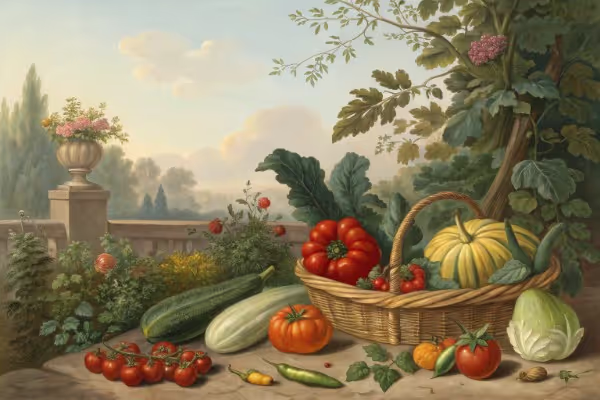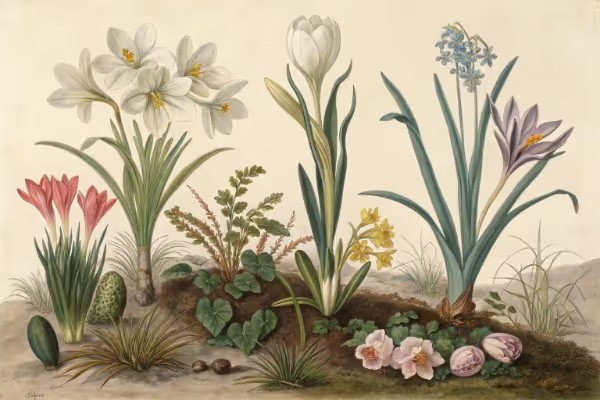Saving Water: Smart Irrigation Tools and Techniques

Smart irrigation gardening
Practice smart irrigation gardening: switch to drip and ET controllers to cut water use 30–50%. Use soil moisture sensors for smart irrigation gardening to skip cycles and cut overwatering 20–40%. Group zones by plant water needs for smart irrigation gardening, and mulch 2–3 inches to curb evaporation up to 25%. Let’s talk valves, flow meters, and the tweaks that make every drop count.
Cheatsheet: Efficient Garden Watering Tactics
💧 Smart Scheduling
- Water before 9 a.m. or after 7 p.m. for 36% less evaporation
- Skip watering if rain ≥ 6 mm (0.25 in) in last 48 hours
🌱 Drip Over Spray
- Drip irrigation uses 60% less water than sprinklers
- Target roots; avoid leaf and path wetting to reduce mildew, waste
📱 Automation and Sensors
- Install smart controllers with weather tracking
- Use soil moisture sensors; prevent overwatering
- Adjust zones to match sun, shade, and plant needs
🛠️ Tools and Products You'll Need
- Drip irrigation kit
- Smart timer/controller
- Soil moisture sensors
- Mulch (organic or stone)
- Hose filter (if using rain barrel)
🍂 Mulch for Moisture
- Apply 5–7.5 cm (2–3 in) mulch under plants
- Reduces surface evaporation up to 60%
- Improves soil health and nutrient retention
♻️ Rainwater Capture
- Install rain barrels (divert ~946 liters/250 gal per inch of rain from 37 m²/400 sq ft roof)
- Connect to soaker hose or watering can
🏆 Health & Self-Sufficiency Boost
- Efficient hydration yields higher-quality, nutrient-dense crops
- Conserves local water; lowers bills
- Reduces weed pressure and soil-borne disease
- Install drip irrigation and mulch throughout root zones
- Attach smart timer and weather-based controller
- Set automatic watering schedules for early morning or evening
- Connect soil moisture sensors and adjust thresholds
- Collect rainwater and integrate with irrigation system
- Monitor, fine-tune, and check mulch depth seasonally
I treat smart irrigation gardening like a quiet pact with the weather, the soil, and my water bill. It pays back in healthier plants and fewer headaches.
"Outdoor water use in the U.S. averages about 30 percent of household use, and can exceed 50 percent in dry regions."
That summary from EPA WaterSense frames the stakes plainly. WaterSense program data also reports typical savings in the thousands of gallons per household per year, often 7,500 to 15,000 gallons, or roughly 28,000 to 57,000 liters, once irrigation gets smarter.
I run a controller that uses ET data, short for evapotranspiration, the combo of plant transpiration and evaporation. It adjusts runtimes after a cool foggy morning or a hot 95 F day, 35 C, without me babysitting it.
Look for WaterSense labeled models that accept local weather feeds or an on-site sensor, a seasonal adjust, and per-zone settings. Set it once, then fine-tune monthly.
These are the brakes your system needs. A sensor at 6 inches, 15 cm, in a representative spot pauses watering until the soil drops below your threshold.
I favor capacitance probes with a stable reading and a simple threshold like 18 to 25 percent volumetric water content for loams. Sand runs lower, clay runs higher.
A small in-line meter catches the silent money-pit, a stuck valve or a split lateral. Mine paid for itself in a single summer by flagging a hidden dripline geyser.
Choose a meter that integrates with your controller for real-time shutoff and reports gallons per minute, liters per minute, with learned baselines per zone.
Sprays are fine for turf, but for beds and edibles I set pressure-compensating emitters or dripline. Delivery goes straight to the root zone.
University of California ANR notes drip can hit 90 percent application efficiency, while sprays often live in the 50 to 70 percent range. That gap is your savings.
Drip needs 20 to 30 psi, 1.4 to 2.1 bar, and a 120-mesh filter. I use a master filter plus zone regulators to keep emitters honest.
Sprays like 30 to 45 psi, 2.1 to 3.1 bar, with matched-precip heads. Get pressure right or you mist the wind and water the sidewalk.
Put high-use plants, edibles and annuals, on their own valves away from natives and shrubs. Start with the thirstiest zone, then scale back everywhere else.
Mismatched zones are the fastest path to soggy roots and crispy leaves in the same bed. Fix that first.
On slopes or clay, I split a 12 minute spray cycle into three rounds with short soak windows. Water goes in, not off the curb.
Soil infiltration rates vary, 0.1 to 0.5 in per hour for clay, 2.0 to 3.0 in per hour for sand, 2.5 to 7.5 cm per hour. Adjust cycles to your soil, not your mood.
Most ornamentals prefer a deep drink, then a rest. I target 6 to 8 inches, 15 to 20 cm, of wetting depth.
Roots chase moisture. Shallow daily spritzing grows shallow roots that quit on hot days.
I keep beds mulched 2 to 4 inches, 5 to 10 cm, with arbor chips or composted leaves. Evaporation drops and soil life climbs.
Boost organic matter by 1 percent and watch plant available water rise. The cheapest water is the water you do not lose.
Irrigate before sunrise. Winds are lighter, air is cooler, losses shrink.
NOAA guidance aligns with this. My leaves thank me by lunch.
- Precipitation rate test: Set cups in a grid, run 10 minutes, average depth. If you catch 0.25 in, 6.4 mm, your rate is 1.5 in per hour, 38 mm per hour.
- Scheduling shortcut: Minutes needed equals desired depth divided by precip rate, then apply cycle-soak. Target 0.5 to 1.0 in, 13 to 25 mm, for turf per event in summer.
- ET and crop coefficient: ET times Kc equals plant need. Turf Kc hovers near 0.7 to 0.8 in mid-summer in many climates. Natives sit far lower.
- Emitters: 0.5 gph, 1.9 lph, for shrubs in clay, 1.0 gph, 3.8 lph, for loam, 2.0 gph, 7.6 lph, for sand or windy spots.
- Rachio 3 or Rachio 3e, best all-around weather-based controller. Easy zone-by-zone tweaks and strong seasonal adjust. Ideal for retrofit yards.
- Hunter Hydrawise HC or Pro-HC, pro-grade with sensor inputs and flow integration. Reliable with large landscapes and mixed valve setups.
- RainMachine Touch HD, on-device programming with local ET calculation. Good if you want control without cloud dependence.
- Orbit B-hyve XR, value pick with WeatherSense scheduling. Solid for small to midsize yards.
- Soil sensors: TEROS 10 or 12 by METER Group for research-grade stability, or budget torpedo-style sensors paired with shutoff relays.
- Flow meters: Hunter HC Flow Meter or Netafim inline prop meters for drip-heavy systems. Aim for leak shutoff integration.
- Dripline for beds: Netafim Techline CV, 0.6 gph per emitter, 2.3 lph, 12 to 18 inch spacing, 30 to 45 cm. Rain Bird XF is another steady performer.
- Pressure regulation: Senninger 25 psi regulators for drip, plus 30 psi regulated spray bodies to stop misting.
- Filters: 120-mesh screen or disc filters on every drip zone. Add a flush valve at the line end and an air-vent at the high point.
- Dedicated valve per hydrozone. Turf separate from shrubs, edibles, natives, and containers.
- Backflow protection that meets local code. I use a pressure vacuum breaker or a reduced pressure assembly.
- Master filter and master valve if your controller supports it. Fail safe off beats fail safe on.
- Design for maintenance. Install unions, flush tees, and valve boxes big enough for human hands.
- Spring and mid-summer audit. Run zones, watch for fogging sprays, clogged emitters, tilted heads, and overspray.
- Flush drip lines, clean filters, and replace worn diaphragms in valves. It takes minutes, saves seasons.
- Recalibrate soil moisture thresholds after big mulching or a soil amendment project. The baseline changed.
- Bump runtimes by a seasonal adjust of 10 to 20 percent during hot spells, then roll back after the front passes.
- Use a skip rule for windy days above 15 mph, 24 kmh, and for forecast rain above 0.2 in, 5 mm.
- Run extra short cycles for containers at dawn and again late afternoon. Potting mix sheds water fast.
Barrels and cisterns pair well with drip zones. I plumb a small transfer pump, 20 to 40 psi, 1.4 to 2.8 bar, and let the controller trigger it.
Add a rain sensor and a tank level sensor. Free water should always go first.
Laundry-to-landscape lines feed shrubs on crude drip branches with mulch basins. No emitters to clog, only branches with easy access.
Keep it subsurface, no food crops, and follow your local code to the letter. Gravity keeps the system honest.
EPA WaterSense reports consistent outdoor savings from weather-based controllers and better scheduling. Their guidance shaped many of my early retrofits.
UC ANR publications document drip efficiency near 90 percent and strong gains from mulch and soil organic matter. The Irrigation Association offers field audit methods like distribution uniformity and catch-can tests.
- Controllers: 80 to 350 USD, 75 to 330 EUR, before rebates. WaterSense labels often unlock utility incentives.
- Soil sensors: 40 to 300 USD, 38 to 285 EUR, depending on accuracy and durability.
- Flow meters: 90 to 250 USD, 85 to 240 EUR, more for large lines. Prioritize models that connect to your controller.
- Drip kits: 60 to 200 USD per bed, 55 to 190 EUR. Do not skimp on filter or pressure regulator.
Check your water provider for residential smart controller rebates. I have seen 50 to 200 USD credits with proof of installation.
My windiest site used to atomize water straight into the neighbor’s hibiscus. Regulated spray bodies at 30 psi and a dawn-only schedule fixed that in one morning.
An edible bed on sandy loam stayed thirsty until I swapped 0.5 gph emitters for 2.0 gph on the perimeter, then mulched with 3 inches, 7.5 cm, of chips. Same total runtime, stress vanished.
A rugged clay slope refused to infiltrate. Three 4 minute cycles with 15 minute soaks beat one 12 minute run and ended street runoff.
A small vineyard block with a cheap soil sensor paid off during a 102 F, 39 C, week. The controller skipped three cycles and berries held their snap.
- How often should I water in summer? Let ET or a soil sensor call the shots, then verify with a trowel. Roots tell the truth.
- Can I mix sprays and drip on one valve? I never do. Pressures and rates do not match and schedules fight each other.
- Do I need a rain sensor with a smart controller? Yes. It is a cheap, physical veto that pairs well with weather data.
- How thick should mulch be? Two to four inches, 5 to 10 cm, kept off trunks and crowns.
Group plants by water need, set pressure and filtration, pick drip for beds and matched sprays for turf, add weather and soil data, then audit with cups and a trowel. After that, trust the system and tweak monthly.
That routine cuts waste, grows deeper roots, and keeps weekends open for harvesting instead of hose duty.

Want smarter plant choices? 🪴
Frequently Asked Questions about Smart Irrigation Gardening
How do weather-based controllers improve water efficiency in the garden?
Weather-based controllers adjust irrigation schedules in response to real-time weather patterns. By factoring in rainfall, humidity, and temperature, they delay or skip cycles during wet or cool conditions. This targeted watering prevents overwatering and reduces waste, helping your garden thrive while conserving resources.
What types of soil moisture sensors are suitable for home gardens?
For smart irrigation gardening, look for capacitance sensors and tensiometers. These devices monitor soil moisture at the root level, sending data to your irrigation controller. They only activate watering when the soil dries past your set threshold, ensuring every drop serves the plant and not the pavement.
Can drip irrigation systems connect with smart controllers?
Drip irrigation pairs well with smart irrigation gardening controllers. By linking emitters and tubing to a smart hub, you can schedule precise watering for individual beds or plants. Many systems offer app-based controls, so you can monitor and adjust watering even when away from home.
How should I adjust irrigation for extreme heat or drought?
Smart irrigation gardening tools allow for seasonal adjustments. During extreme heat (above 90°F/32°C) or drought, increase watering frequency slightly, but continue to use moisture sensors or weather-based settings to prevent waste. Mulch garden beds to reduce evaporation and water early in the morning to maximize absorption.
What maintenance does a smart irrigation system require?
Routinely inspect sensors, emitters, and controllers for debris or mineral buildup. Replace batteries in wireless sensors at least once per season. Check hoses and fittings for leaks. After programming seasonal changes, test the system to confirm valves and zones open and close on schedule.
How can I retrofit an existing sprinkler system with smart irrigation tools?
Start by replacing your current timer with a smart irrigation controller compatible with your sprinklers. Add soil moisture sensors or flow meters for real-time feedback. Check if your sprinkler heads allow for precision adjustments or consider switching to rotary nozzles to cut water usage further.
Smart irrigation gardening is simple: water the roots, let data call the shots, and waste nothing. Go deep and infrequent. Run drip or soaker lines under mulch to feed soil, not sidewalks. Add a soil moisture sensor, a flow meter, and a weather-based controller. Set seasonal schedules, group plants by thirst, fix leaks, and audit monthly. Water at dawn. Let rain and shade carry some of the load.
Want gear that earns its keep? Explore practical gardening gadgets, pair them with a reliable gardening app, and tune watering by local temperature and humidity. Keep notes, adjust, repeat. Plants respond. The water bill does too.
The Science Behind Smart Irrigation Gardening
Soil moisture levels rarely stay stable for long. Roots thirst or drown—rarely in-between. Smart irrigation corrects this, producing uniform growth and minimizing fungal risk. Research from UC Davis shows water savings near 50 percent with sensor-driven systems, compared to mechanical timers.
Plants access nutrients best at steady moisture. Fluctuations stress tomatoes, leafy greens, and fruiting shrubs, weakening flavor and vitamin content. Reliable irrigation shields your harvest’s nutrition profile, flavor, and shelf life.
Sensing and Responding: How Plants Signal
- Roots absorb most efficiently when soil moisture holds between 60%–80% field capacity.
- Sensors reading 6–8 inches (15–20 cm) deep capture actionable data on most garden crops.
- Humidity and wind raise plant transpiration; smart systems adjust cycles within minutes as weather shifts.
Data That Drives Growth
- Wireless soil probes transmit live data. Algorithms weigh sun, slope, and shade, deciding each plant’s dose.
- Flow meters detect leaks, alerting you long before damage to raised beds or roots sets in.
- Single rain event? Sensors pause irrigation, preventing overwatering. EPA estimates over 1.5 billion gallons/day are lost to unnecessary irrigation in US gardens.
Health, Nutrition, and Self-Sufficiency Impact
- Vegetables watered consistently store more minerals, retain higher levels of Vitamin C, and show stronger cell walls, resisting spoilage.
- Even moisture fosters deeper roots—plants require less frequent watering, thrive during drought, and resist disease.
- Automated irrigation frees hands for composting, succession planting, and pruning, deepening your food resilience.
Environmental Precision
- Targeted, sensor-triggered watering preserves groundwater and reduces runoff to creeks by up to 60 percent.
- Smart controllers adapt to soil type—silt, clay, or sandy—avoiding pooling and erosion.
- Data logs help fine-tune your system yearly, catching inefficiencies invisible to the naked eye.
Find out which plants will thrive in your garden!
Answer a few fun questions and get custom plant recommendations perfect for your space. Let’s grow something amazing together!

start your season
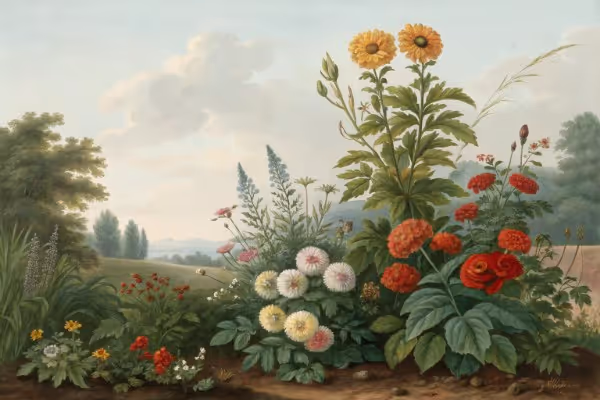
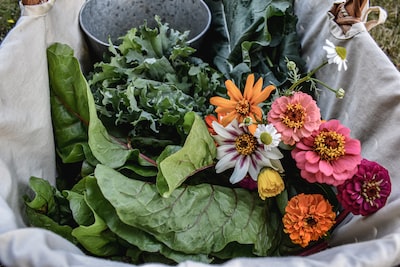
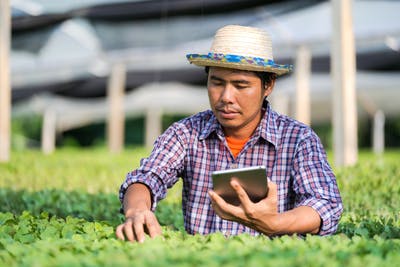
.avif)
